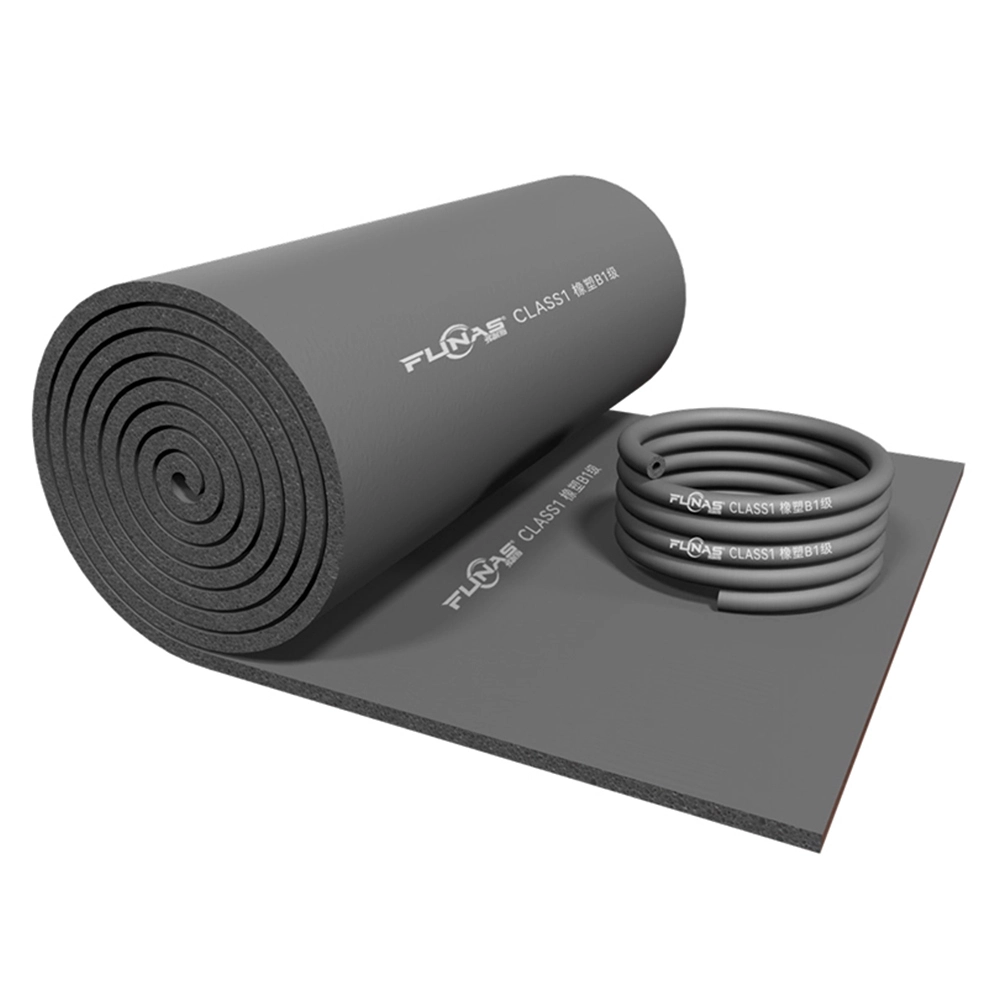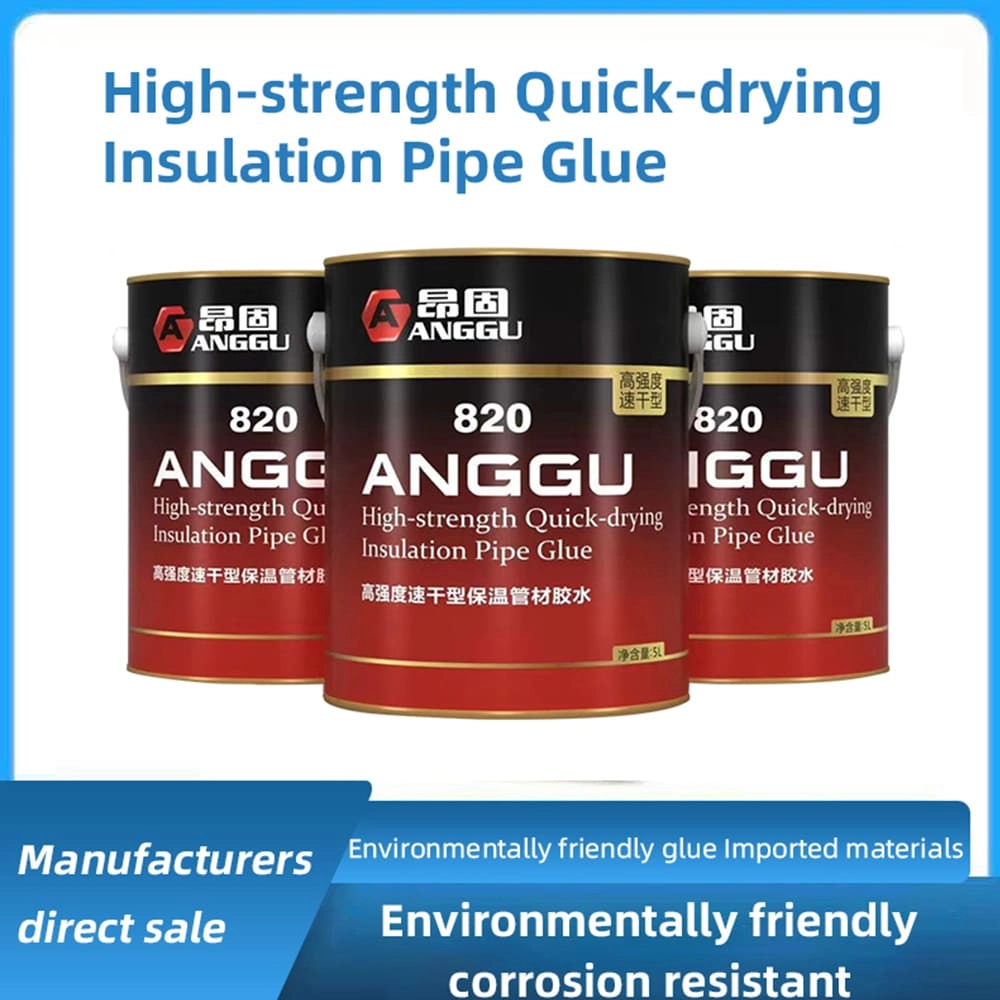how much pipe insulation do i need | FUNAS Expert Guide
Selecting the correct pipe insulation is vital for energy efficiency, process control, and safety in industrial and commercial settings. This guide addresses key factors like operating temperature, ambient conditions, and material thermal conductivity, along with crucial measurements based on pipe outer diameter. It details common insulation types—fiberglass, mineral wool, elastomeric foam, cellular glass, phenolic foam, and PIR—highlighting their applications and thermal properties. The article also emphasizes the importance of adhering to industry regulations and standards like ASHRAE 90.1 and IECC to ensure compliance and optimal performance in procurement decisions.
- Optimizing Thermal Performance: Understanding Your Pipe Insulation Needs
- Why is Pipe Insulation Crucial for Industrial and Commercial Applications?
- What Factors Determine the Required Pipe Insulation Thickness?
- How Do I Accurately Measure Pipes for Insulation Procurement?
- What Are the Common Types of Pipe Insulation Materials and Their Applications?
- Are There Specific Regulations or Standards Governing Pipe Insulation in Industry?
Optimizing Thermal Performance: Understanding Your Pipe Insulation Needs
In the realm of thermal insulation materials, correctly sizing and selecting pipe insulation is paramount for energy efficiency, process control, and safety. Miscalculations can lead to significant energy losses, condensation issues, or even system failures. This guide delves into the professional considerations for determining how much pipe insulation do I need, equipping industry users with the knowledge to make informed procurement decisions.
Why is Pipe Insulation Crucial for Industrial and Commercial Applications?
Pipe insulation serves multiple critical functions beyond mere energy saving. Firstly, it minimizes heat transfer, preventing heat loss from hot pipes (e.g., steam, hot water) and heat gain into cold pipes (e.g., chilled water, refrigeration lines). This directly translates to reduced energy consumption and operational costs. For instance, uninsulated 3-inch steam pipes can lose thousands of BTUs per hour per linear foot, leading to substantial financial waste. Secondly, insulation prevents condensation on cold surfaces, which can cause water damage, corrosion, and mold growth. Thirdly, it offers freeze protection for water lines in unheated areas, safeguarding against costly pipe bursts. Lastly, it provides personnel protection by reducing surface temperatures of hot pipes, preventing burns and ensuring a safer working environment. Compliance with energy codes and safety standards often mandates insulation requirements.
What Factors Determine the Required Pipe Insulation Thickness?
Determining the correct insulation thickness is not a one-size-fits-all endeavor; it's a complex calculation influenced by several key variables:
- Pipe Operating Temperature: The temperature of the fluid inside the pipe is the primary factor. Higher temperatures (for hot pipes) or lower temperatures (for cold pipes) generally require thicker insulation to achieve desired performance.
- Ambient Temperature and Humidity: The surrounding air temperature and relative humidity significantly impact heat transfer and condensation potential. Outdoor applications or high-humidity environments demand more robust insulation solutions.
- Desired Surface Temperature: For personnel protection or process control, a specific maximum or minimum surface temperature might be required, dictating insulation thickness.
- Economic Payback Period: Insulation thickness is often optimized based on the return on investment. Thicker insulation provides greater energy savings but incurs higher initial costs. Engineers use life-cycle cost analysis to determine the most economically viable thickness over a project's lifespan.
- Insulation Material's Thermal Conductivity (k-value or λ): This is a measure of a material's ability to conduct heat. Materials with lower k-values are more effective insulators, meaning less thickness is needed for the same thermal performance. For example, fibrous insulation like mineral wool or fiberglass typically has k-values ranging from 0.035 to 0.045 W/(m·K) at moderate temperatures, while elastomeric foams are often around 0.038 to 0.045 W/(m·K).
- Pipe Diameter: The larger the pipe diameter, the larger the surface area, potentially requiring different insulation strategies or thicknesses.
- Regulations and Standards: Compliance with local building codes, energy codes (e.g., ASHRAE 90.1, IECC), and industry-specific standards (e.g., ASTM, NFPA) often sets minimum insulation thickness requirements based on pipe type and application.
How Do I Accurately Measure Pipes for Insulation Procurement?
Accurate measurement is critical to avoid waste and ensure proper fit. Insulation is typically sized based on the pipe's nominal pipe size (NPS) and its actual outer diameter (OD). Always confirm the actual OD of the pipe you are insulating, as NPS designations can sometimes be misleading, especially for smaller pipe sizes or different piping schedules. For example, a 2-inch NPS pipe has an OD of 2.375 inches (60.3 mm). Procurement should specify insulation for a given NPS and corresponding wall thickness to ensure the correct internal diameter for the insulation sleeve. For fittings (elbows, tees, valves), specialized pre-formed insulation covers or field-fabricated insulation blankets are often used, requiring careful measurement of the fitting's dimensions.
What Are the Common Types of Pipe Insulation Materials and Their Applications?
The choice of insulation material depends heavily on the operating temperature, environmental conditions, and specific application requirements:
- Fiberglass: Widely used for hot water, steam, and HVAC applications (up to 850°F / 454°C). Available in rigid sections and blankets. Good thermal performance and cost-effective.
- Mineral Wool: Excellent for high-temperature applications (up to 1200°F / 650°C), fire resistance, and acoustic dampening. Often used in industrial processes.
- Elastomeric Foam (e.g., NBR/PVC, EPDM): Ideal for chilled water, refrigeration, and HVAC systems (down to -297°F / -183°C and up to 250°F / 121°C). Offers superior moisture resistance and a closed-cell structure, preventing condensation and moisture ingress.
- Cellular Glass: Rigid, non-combustible, and highly resistant to moisture, chemicals, and vermin. Suitable for both hot (up to 800°F / 427°C) and cold (down to -450°F / -268°C) applications, including cryogenic systems.
- Phenolic Foam: A rigid closed-cell foam offering excellent thermal performance, low smoke emission, and fire resistance. Suitable for HVAC and industrial applications (typically -50°F to 250°F / -45°C to 120°C).
- Polyisocyanurate (PIR) / Polyurethane (PUR): Often used for low-temperature and cryogenic applications, offering good thermal efficiency and structural integrity.
When procuring, consider the material's R-value per inch, maximum/minimum service temperature, moisture vapor permeability, fire rating, and mechanical strength.
Are There Specific Regulations or Standards Governing Pipe Insulation in Industry?
Yes, compliance with various regulations and standards is crucial for professional pipe insulation projects:
- ASHRAE 90.1: Energy Standard for Buildings Except Low-Rise Residential Buildings sets minimum insulation requirements for mechanical piping and equipment based on fluid temperature and pipe size, often adopted by state and local building codes in the USA.
- International Energy Conservation Code (IECC): Similar to ASHRAE 90.1, the IECC also specifies minimum insulation R-values for piping in commercial and residential buildings.
- Local Building Codes: Many jurisdictions have specific amendments or additional requirements beyond national standards.
- ASTM Standards: Govern testing methods for insulation materials (e.g., thermal conductivity ASTM C518, water vapor transmission ASTM E96) and specifications for various insulation types.
- NFPA Standards (e.g., NFPA 90A, 90B): Relate to fire safety and may dictate insulation material fire ratings in HVAC systems.
- Industrial Process Standards: Specific industries (e.g., oil & gas, chemical processing) may have their own internal standards or require compliance with API, ASME, or ISO standards for insulation systems, particularly for high-temperature or critical processes.
Consulting with insulation engineers or specialists is highly recommended to ensure compliance and optimal performance for your specific project needs. Procurement teams should always verify that materials meet or exceed these required standards and possess relevant certifications.

The Ultimate Guide to Glass Wool Insulation 2026

Top 10 Foam Rubber Sheet Manufacturers for Insulation & More

Top 14 Rock Wool Panel Brands: Expert Guide for 2026

Top 10 Insulation Adhesives for Heat & Soundproofing 2026
service
What is your shipping and delivery process like?
We offer reliable logistics services for insulation material wholesale, both domestically and internationally. Our team ensures secure packaging, timely shipping, and real-time tracking so that your order reaches you in perfect condition and on schedule.
Are your rubber foam products environmentally friendly?
Yes, our insulation products are designed with sustainability in mind. They help reduce energy consumption by minimizing heat loss and gain, and they are made from durable materials that have a long life cycle, reducing the need for frequent replacement.
FAQ
What types of rubber foam insulation do you offer?
We offer a wide range of rubber foam insulation with different thicknesses and specifications. Thermal insulation material manufacturer FUNAS sleeves and sheets are suitable for different application scenarios.
Can your insulation products be customized?
Yes, we offer customized solutions for insulation material wholesale to meet the specifications of your project, including custom specifications, sizes, foils and adhesives, colors, etc.
You might also like

Thermal insulation material fireproof adhesive

China Manufacturer ANGGU Rubber Foam Dedicated Adhesives & Sealants & Glue
Our high-performance adhesives ensure durability and excellent adhesion, guaranteeing optimal results for all your industrial needs. Specially formulated for precision and strength, Funas adhesives offer seamless application and long-lasting reliability. Trust in quality and innovation with our dedicated rubber foam adhesives. Perfect your projects with Funas, where excellence meets commitment.

Blue Rubber-plastic Tube Rubber foam pipe wholesale

Wholesale black Rubber-plastic Board Rubber foam panel sheet
Leave a message
Have any questions or concerns about our products? Please leave us a message here and our team will get back to you promptly.
Your queries, ideas, and collaboration opportunities are just a click away. Let’s start a conversation.


















































